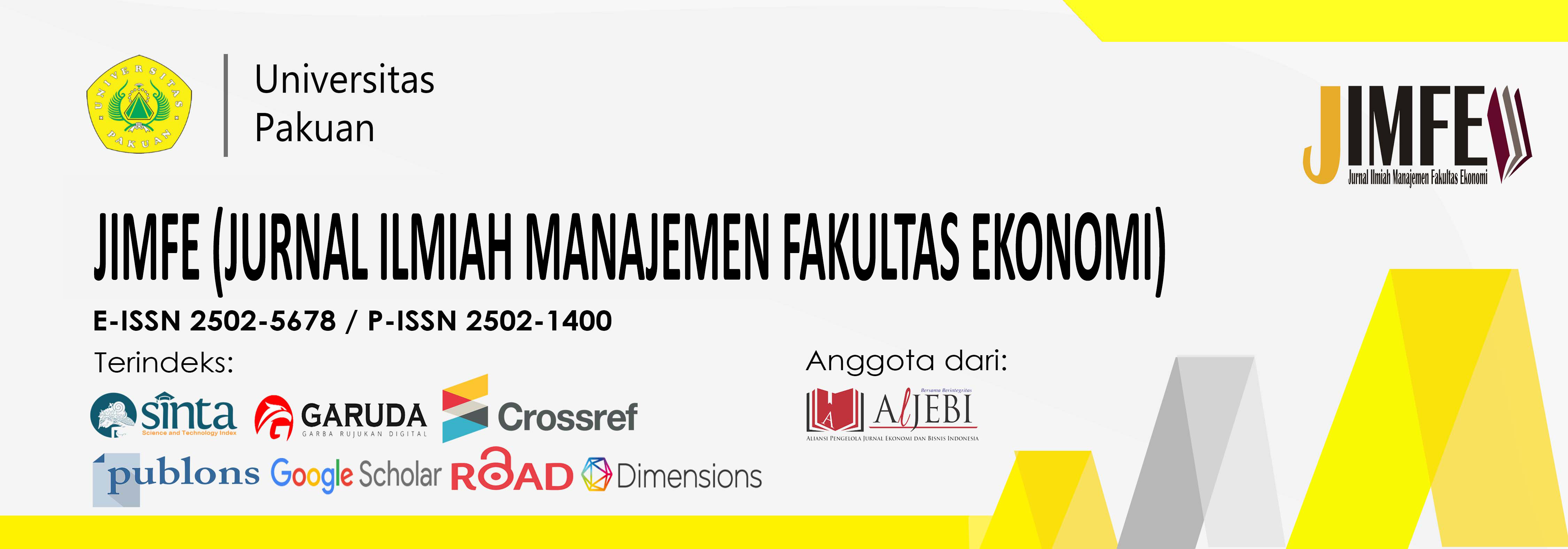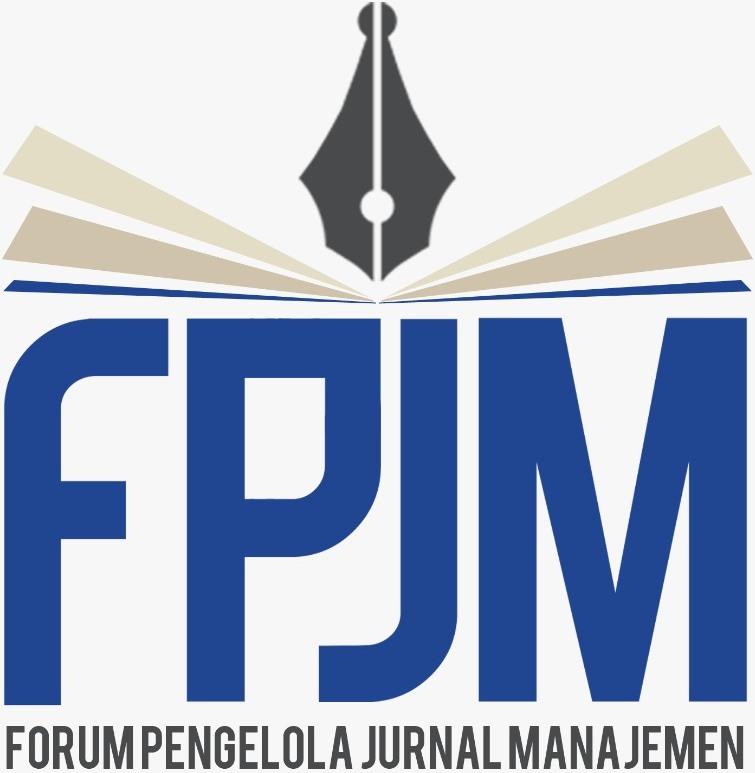PROFILING FINANCIAL INCLUSION IN INDONESIA: DOES IT SUPPORT BANK SAVINGS AND HUMAN DEVELOPMENT INDEX?
Abstract
ABSTRACT
The purpose of this study was to test its positive correlation on the human development index. This study uses publicly available data from the Indonesian Financial Authority, the Central Statistics Agency, and the World Bank's Global Financial Index Data. Data analysis using correlation analysis. The results showed that the financial inclusion index had a positive correlation with total credit and total savings in each province. It also shows a positive correlation to the provincial-level human development index. The significance of our research is the financial inclusion of the province which brings many benefits to the state to a degree. Therefore, our research is to increase financial inclusion in Indonesia. Financial inclusion research is very limited to provincial-level analysis in emerging markets such as Indonesia, this study aims to expand the literature in this area and fill it.
ABSTRAK
Tujuan penelitian ini bertujuan untuk menguji korelasi positifnya pada indeks pengembangan manusia. Penelitian ini menggunakan data yang tersedia untuk umum dari Otoritas Keuangan Indonesia, Badan Pusat Statistik, dan Data Indeks Keuangan Global Bank Dunia. Analisis data menggunakan menggunakan analisis korelasi. Hasil penelitian menunjukkan indeks inklusi keuangan memiliki korelasi positif terhadap total kredit dan total tabungan di setiap provinsi. Ini juga menunjukkan korelasi positif terhadap indeks pembangunan manusia tingkat provinsi. Signifikansi penelitian kami adalah inklusi keuangan membawa banyak manfaat bagi negara hingga tingkat provinsi. Oleh karena itu, implikasi dari penelitian kami adalah untuk meningkatkan inklusi keuangan di Indonesia. Penelitian inklusi keuangan sangat terbatas pada analisis tingkat provinsi di pasar negara berkembang seperti Indonesia, penelitian ini bertujuan untuk memperluas literatur di bidang ini dan untuk mengisi kesenjangan tersebut.
Keywords
References
Arun, T., & Kamath, R. (2015). Financial inclusion: Policies and practices. IIMB Management Review, 27(4), 267287. http://doi.org/10.1016/j.iimb.2015.09.004
Arora, R. U. (2012). Financial Inclusion And Human Capital In Developing Asia: The Australian Connection. Third World Quarterly, 33(1). 179-199.
Bhatia, N., & Chatterjee, A. (2010). Financial Inclusion in the Slums of Mumbai. Economic and Political Weekly, 45(42), 2326. http://doi.org/10.1057/978-1-137-58337-6
Ergun, K. (2017). Ergun 2017.pdf. Research in Economics and Business: Central and Eastern Europe, 9(2), 7794.
FungáÄová, Z., & Weill, L. (2014). Understanding financial inclusion in China. China Economic Review, 34, 196206. http://doi.org/10.1016/j.chieco.2014.12.004
Habibullah, M. S., & Hidthiir, M. H. (2004). Does Financial Liberalization Matter for Higher Savings? Some Evidence for Malaysia, The Philippines, and Thailand. Savings and Development, 28(1), 519.
Iqbal, B. A., & Sami, S. (2017). Papel de los bancos en la inclusión financiera en la India. Contaduria Y Administracion, 62(2), 644656. http://doi.org/10.1016/j.cya.2017.01.007
Laha, A. (2015). Association Between Financial Inclusion And Human Development In South Asia: A Corss-Country Analysis With Special Reference To India. Journal of Economic Policy and Research. 10(2). 69-91.
Liu, G.-C., Lee, C.-C., & He, L. (2016). The Synergistic Effects Between Insurance and Credit Markets on Economic Growth: Evidence from China. Global Economic Review, 45(1), 118. http://doi.org/10.1080/1226508X.2015.1075897
Loayza, N., Schmidt-hebbel, K., & Serven, L. (2000). Saving in Developing Countries : An Overview. The World Bank Economic Review, 14(3), 393414.
Masson, P. R., Bayoumi, T., & Samiei, H. (2016). International Evidence on the Determinants of Private Saving Author. The World Bank Economic Review, 12(3), 483501.
Mongale, I. P., Mashamaite, T., & Khoza, N. (2018). Household savings, financing and economic growth in South Africa. Business and Economic Horizons, 14(1), 105116. http://doi.org/10.15208/beh.2018.9
Otoritas Jasa Keuangan. (Desember, 2016a). Statistik Perbankan Indonesia. https://www.ojk.go.id/id/kanal/perbankan/data-dan-statistik/statistik-perbankan-indonesia/Documents/Pages/Statistik-Perbankan-Indonesia---Desember-2016/SPI Desember 2016.pdf
Otoritas Jasa Keuangan. (Desember, 2016b). Survei Nasional Literasi dan Inklusi Keuangan 2016. Survey Report. https://www.ojk.go.id/id/berita-dan-kegiatan/siaran-pers/Documents/Pages/Siaran-Pers-OJK-Indeks-Literasi-dan-Inklusi-Keuangan-Meningkat/17.01.23 Tayangan Presscon nett.compressed.pdf
Owen, A. L., & Pereira, J. M. (2018). Bank concentration, competition, and financial inclusion. Review of Development Finance, 8(1), 117. http://doi.org/10.1016/j.rdf.2018.05.001
Queralt, J., Fu, J., & Romano, M. (2017). Financial inclusion and the 2030 Agenda for Sustainable Development: a missed opportunity. Enterprise Development & Microfinance, 28(3), 200211.
Raichoudhury, A. (2016). Financial inclusion & human development: A cross country analysis. Asian Journal of Business Research, 6(1). 34-48. DOI 10.14707/ajbr.160020
United Nations Development Programme. (2016). Human Development Report 2016: Human Development for Everyone. United Nations Development Programme. http://doi.org/eISBN: 978-92-1-060036-1
DOI: 10.34203/jimfe.v8i1.5136
Refbacks
- There are currently no refbacks.
Copyright (c) 2022 Supeni Anggraeni Mapuasari, Ahmad Maulin Naufa

This work is licensed under a Creative Commons Attribution-NonCommercial-ShareAlike 4.0 International License.











